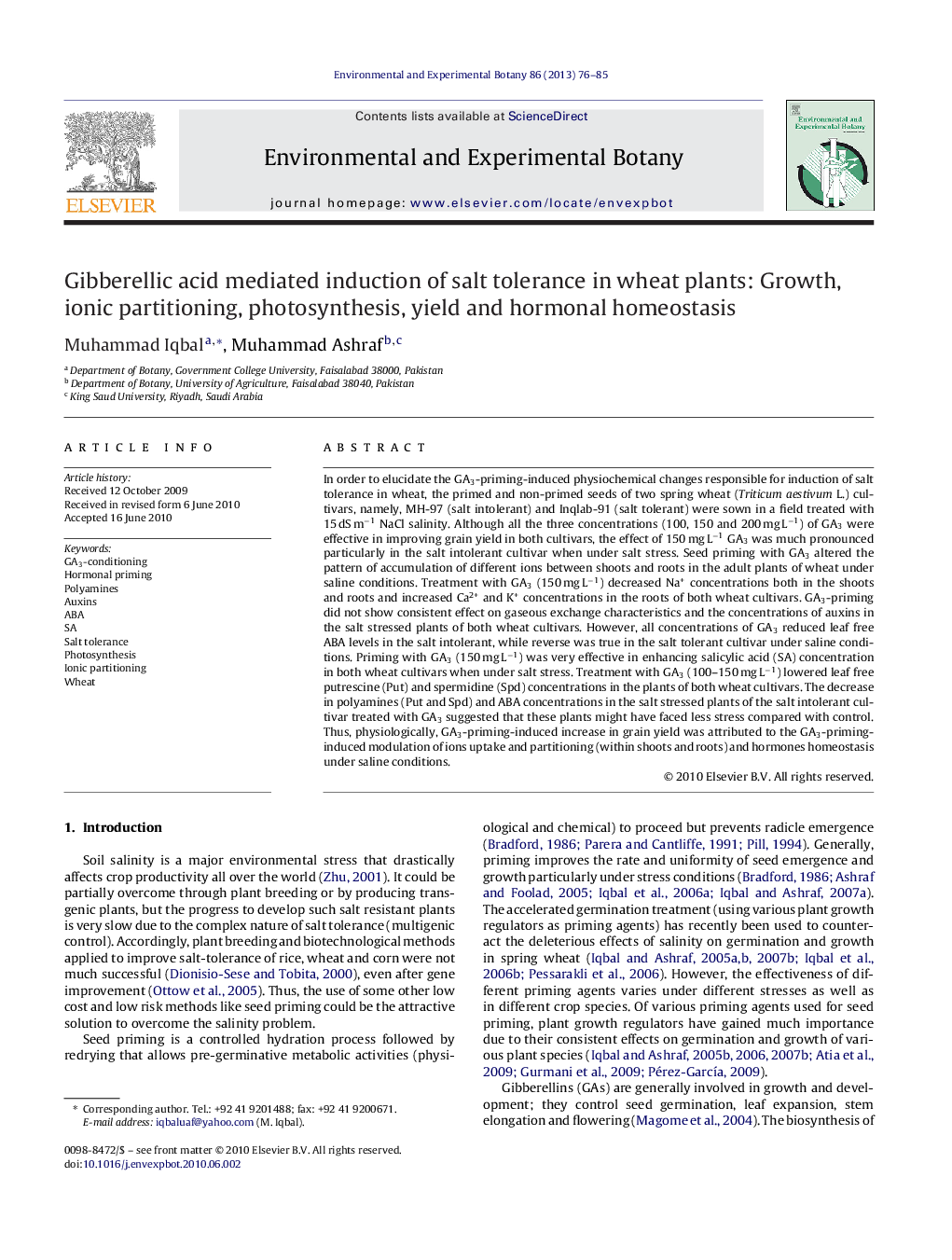| کد مقاله | کد نشریه | سال انتشار | مقاله انگلیسی | نسخه تمام متن |
|---|---|---|---|---|
| 4554555 | 1628091 | 2013 | 10 صفحه PDF | دانلود رایگان |

In order to elucidate the GA3-priming-induced physiochemical changes responsible for induction of salt tolerance in wheat, the primed and non-primed seeds of two spring wheat (Triticum aestivum L.) cultivars, namely, MH-97 (salt intolerant) and Inqlab-91 (salt tolerant) were sown in a field treated with 15 dS m−1 NaCl salinity. Although all the three concentrations (100, 150 and 200 mg L−1) of GA3 were effective in improving grain yield in both cultivars, the effect of 150 mg L−1 GA3 was much pronounced particularly in the salt intolerant cultivar when under salt stress. Seed priming with GA3 altered the pattern of accumulation of different ions between shoots and roots in the adult plants of wheat under saline conditions. Treatment with GA3 (150 mg L−1) decreased Na+ concentrations both in the shoots and roots and increased Ca2+ and K+ concentrations in the roots of both wheat cultivars. GA3-priming did not show consistent effect on gaseous exchange characteristics and the concentrations of auxins in the salt stressed plants of both wheat cultivars. However, all concentrations of GA3 reduced leaf free ABA levels in the salt intolerant, while reverse was true in the salt tolerant cultivar under saline conditions. Priming with GA3 (150 mg L−1) was very effective in enhancing salicylic acid (SA) concentration in both wheat cultivars when under salt stress. Treatment with GA3 (100–150 mg L−1) lowered leaf free putrescine (Put) and spermidine (Spd) concentrations in the plants of both wheat cultivars. The decrease in polyamines (Put and Spd) and ABA concentrations in the salt stressed plants of the salt intolerant cultivar treated with GA3 suggested that these plants might have faced less stress compared with control. Thus, physiologically, GA3-priming-induced increase in grain yield was attributed to the GA3-priming-induced modulation of ions uptake and partitioning (within shoots and roots) and hormones homeostasis under saline conditions.
Journal: Environmental and Experimental Botany - Volume 86, February 2013, Pages 76–85